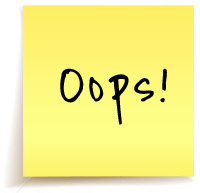Story sums
Story sums, problem solving sums and detective sums all refer to the same thing. These sums are language based. It is imperative that you start exploring, investigating and playing with these kinds of sums as early as possible. Many children who find the written word a challenge, find story sums very tricky when they are required to read them. This is because they have to read the sum, internalise it, choose the operation necessary – addition, subtraction, multiplication or division - and then calculate the answer to the sum.
By playing with these sums orally with your child from a young age, he or she will get used to hearing the language involved and become familiar with the expectations. It is important to make these a part of your daily life and incorporate them into everyday activities.
· Start at Pre-school level with simple age appropriate and relevant problems. Mom gives Sarah and Anna 2 cupcakes each. How many cupcakes do they have altogether? The word altogether implies that you have to put numbers together, therefore it is an addition or plus sum.
· For example, Mom gives Jessica 3 sweets and she eats 1. How many sweets does Jessica have left? The word left implies that you have to take something away; it is therefore a minus, subtraction or take-away sum. Talk your child through this.
· Use concrete objects, so that your child can see exactly what is required. Jared has 4 balloons. 2 popped. How many are left? Use actual balloons and physically take them away so that your child can see that they are no longer there and he/she can physically only see 2 left.
Story sums, problem solving sums and detective sums all refer to the same thing. These sums are language based. It is imperative that you start exploring, investigating and playing with these kinds of sums as early as possible. Many children who find the written word a challenge, find story sums very tricky when they are required to read them. This is because they have to read the sum, internalise it, choose the operation necessary – addition, subtraction, multiplication or division - and then calculate the answer to the sum.
By playing with these sums orally with your child from a young age, he or she will get used to hearing the language involved and become familiar with the expectations. It is important to make these a part of your daily life and incorporate them into everyday activities.
· Start at Pre-school level with simple age appropriate and relevant problems. Mom gives Sarah and Anna 2 cupcakes each. How many cupcakes do they have altogether? The word altogether implies that you have to put numbers together, therefore it is an addition or plus sum.
· For example, Mom gives Jessica 3 sweets and she eats 1. How many sweets does Jessica have left? The word left implies that you have to take something away; it is therefore a minus, subtraction or take-away sum. Talk your child through this.
· Use concrete objects, so that your child can see exactly what is required. Jared has 4 balloons. 2 popped. How many are left? Use actual balloons and physically take them away so that your child can see that they are no longer there and he/she can physically only see 2 left.


 Oops! We can’t find the article you are looking for. Please try a different Subject, Grade or Title.
Oops! We can’t find the article you are looking for. Please try a different Subject, Grade or Title.